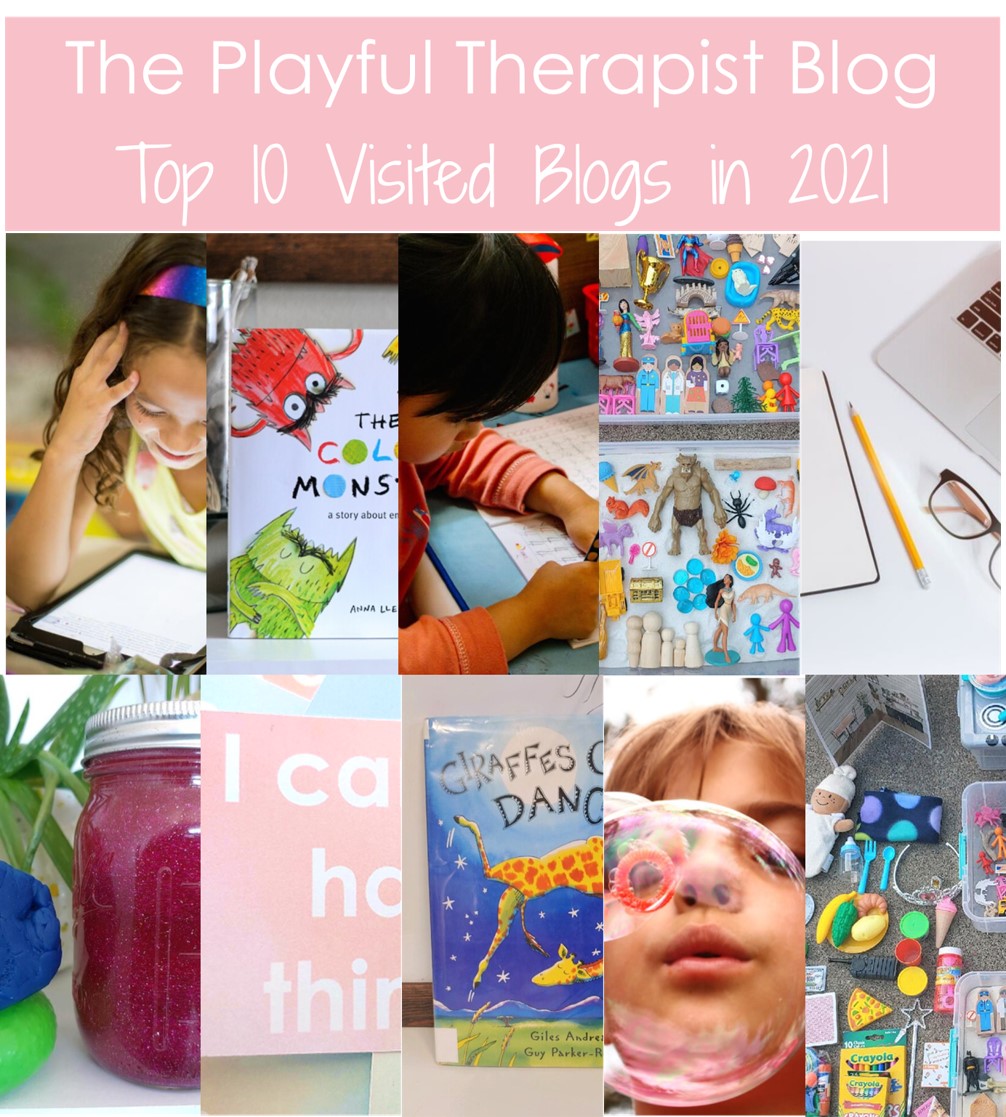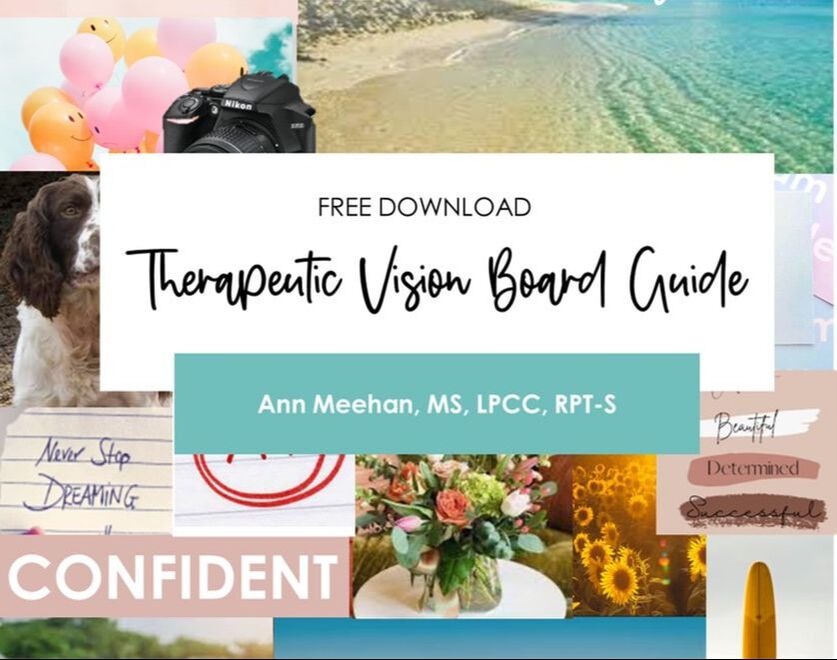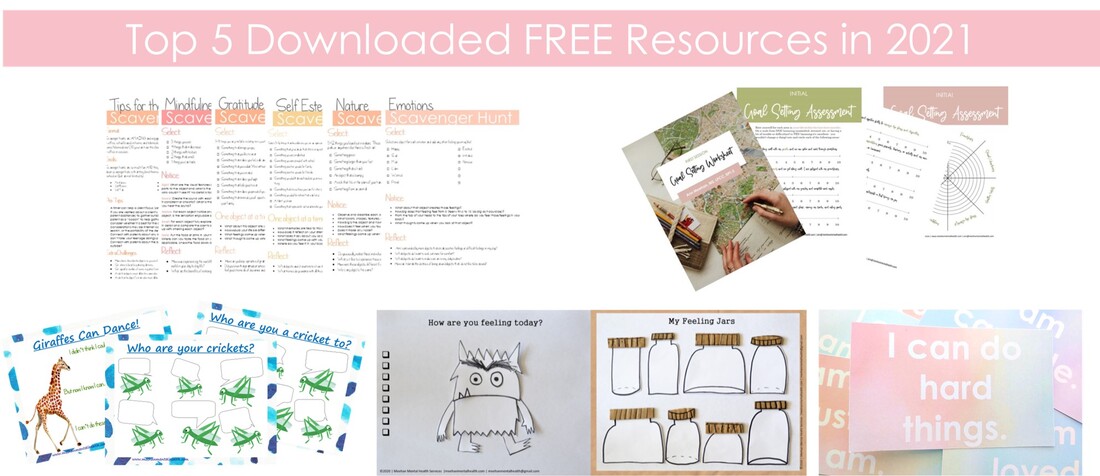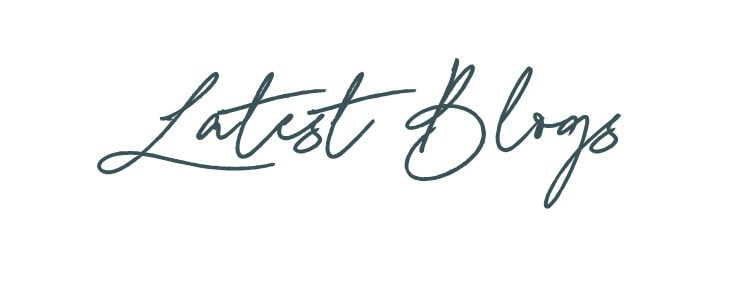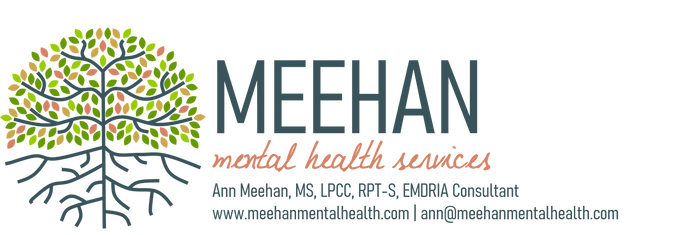|
Life can be so busy as a child therapist. You are trying to be present for your clients, provide the most evidence based and effective treatment modalities, oh...and then there are the “other things” that get shoved between client sessions and in the random client cancellation.
You know, the phone calls, emails, preparing and sending records, and the client crises. As much as we can strive for wonderful outside of session boundaries - things happen that we need to attend to, like documentation for IEPs or provider coordination calls. Oh ya - and the documentation, writing notes, updating treatment plans and annual assessments, and all the other assessments and bits of information that need to be in client files. Wheeew - so in all of that I wanted to catch you up on some of my top blogs visited in 2021 that thousands of therapists have found benefit in. In case you missed any of these here are my top 10 visited blogs in 2021: Telemental Health and Children: 20 Free and Minimal Supply Activities This blog will give you 20 free and minimal supply activities you can use both for Telemental Health and in person. It gets right to the good stuff with all of the resources in one place! The Color Monster: Free Downloadable Worksheet Set A completely free downloadable resource to use as a companion with The Color Monster book! Did you know that research shows that adding an activity with a Bibliotherapy makes it more effective? Well… now you do! Play Therapy Progress Note Tips Okay - most of us struggle with writing effective progress notes. Now what about as a Play Therapist? Here are some of my top tips to communicate the therapeutic benefits of activities such as “giant tornado ball crushes city” and “7 rounds of UNO”. Covert Calming This blog is FULL of activities to help young people regulate and calm without putting out a flashing beacon that they are working on regulation skills. These are pure gold for young people who struggle with utilizing skills because they are worried what others will think. 4 Calming Crafts to Make in Your Office Get inspired with ideas of low prep/supply crafts to make in your office and for your client’s to take home that will help with calming and regulation. 5 Playful Ways to Teach Deep Breathing Recently at a training I asked everyone to raise their hands if they had clients who were excited and fully on board to learn one of the most effective strategies backed by neuroscience for regulating emotions - deep breathing!!! Yay!! Okay - nobody raised their hands and I’m not surprised. Most young people aren’t so excited about learning this skill, so this blog is full of creative and playful ways to get kids to learn and actually use deep breathing! Bibliotherapy: Giraffes Can’t Dance Remember above that bibliotherapy interventions are more effective with a paired directive Play Therapy activity? Well - here’s another one for you complete with a FREE downloadable worksheet! Giraffes can’t dance has it all - growth mind set, shifting cognitions, and an adorable giraffe Gerald! This is definitely in my top 3 Bibliotherapy books!! The Portable Playroom: Comprehensive Play Therapy Kit Source List One of my most frequently asked questions is around what toys a therapist should buy when working with kids. Oh - and a lot of therapists I work with for supervision/consultation have a portable practice where they are going in home, to multiple schools, or are in different offices. These kits were developed inside of the pandemic as a resource I sent to child client’s so we could continue our Play Therapy with a version of my playroom brought right into their living rooms, bedrooms, or wherever they were playing. So - let me do the heavy lifting for you! This is a comprehensive guide with all my source links for you to check and out! Sand Tray and Miniature Kit: Source List Sand Tray is one of my favorite modalities to work with children. This blog holds a source list of sand tray miniatures, where to get sand tray containers that are portable, and my favorite sand. It also includes a list of free or found objects that are a great addition to any Sand Tray practice! Free Download: 15 Calming Affirmations for Kids If you are working on shifting thinking patterns with young people this is an excellent and FREE resource to help young people identify that adaptive and intentional thoughts that they would like to occupy their minds. Cognitive Behavioral Therapy is all about shifting cognitions to adaptive to help people feel better and act in the ways that work for both them and the world around them. Help young people get intentional with these free (and oh so pretty) downloadable cards! There you have it! The top 10 visited blogs from The Playful Therapist Blog in 2021. Blogs come out each week on Wednesday and cover a variety of topics from Play Therapy interventions, free downloads, tips and strategies for documentation, and practice elevating resources. And if you want even more resources sent straight to your inbox join my email list HERE!
0 Comments
Creating a vision board is a fun, engaging, and playful way to help middle schoolers and teens to help think about the goals and create hope and excitement for the future. Did you also know that vision boarding is backed by research and neuroscience as a way to help young people move towards their goals? The first way this is true comes back to research about the “common factors” that make therapy effective. I talked HERE about the number one factor that predicts success in therapy, which is the therapeutic relationship! The number two factor? Well, that just happens to be hope. Hope for the future and hope that things will get better. Without this hope and vision, young people will struggle to put in the hard work it takes in therapy because they really don’t believe that things will be different. Vision boards also help your brain identify and grasp opportunities that may have otherwise gone unnoticed. Neuroscientist Tara Swart explains it like this - our brain has a process called “value tagging” which is a system for imprinting important things onto your subconscious. Items that are “value tagged” are assigned a higher value and seen as more important. Information that is seen as unnecessary is filtered out. By creating a visual representation of your goals you are telling your brain these things are important to you and your brain will begin to pay attention to and notice things in your environment that align with these goals instead of filtering the information out. Now, there is one shift that I make when taking the concept of a vision board and bringing it into the therapeutic relationship. And, that one thing is willingness. It’s one thing to put wildly exciting things on a vision board like “climb Mount Everest” or “take a hot air balloon around the world” - but if they don’t like the cold or heights these goals have a slim to none chance of coming true. So I like to shift the concept of vision board to action board. What dreams do they have that they are committed, willing, and prepared to work towards? Getting an A in math class? Driving a brand new car? Traveling to Hawaii? Getting into their top pick for college? Renting their own apartment? Being able to cook dinner? Being the captain of their team or the lead in a play? Then - you take these big goals and break them down into little bite sized pieces. Things they can accomplish in a shorter amount of time that brings them closer to their goal. What activities or volunteer opportunities do they need to have to get into their top college? What are the steps from getting to barely boiling water to fully preparing a three course meal? What exercise regime will get them closer to scoring more goals? Grab this FREE downloadable worksheet guide HERE that helps both you and your clients get crystal clear on what the larger vision is and the action steps to get there. After all of this you can decide on your medium:
Don’t forget to grab this FREE downloadable worksheet guide HERE to help you make vision boards therapeutic, fun, and effective! Now – get dreaming! Let's Connect - click here to join my email list!
Updating your Play Therapy gear and toolbox can be expensive. The trainings. The toys….So. Many. Toys. EEEK! BUT I wanted to give you some inspiration and tools that are totally, completely, 100% free. Okay not completely free - they will cost you some printer paper and ink. But beyond that - totally free! Sometimes we hit a wall as therapists and want to mix up our old standbys. I think that is what makes me so excited to create worksheets, develop and tweak techniques, and always put myself in the role of a learner. When we feel burnt out or a little stale because we have taught emotional regulation with UNO all week - kids feel that. AND when we get excited about a new technique, toy, or way to help move them towards their goals - well, they feel that too! I wanted to give you my top 5 downloaded resources this year that thousands of therapists have integrated into their practice! And chances are, your clients might like them too! Therapeutic Scavenger Hunt Pack This Scavenger Hunt pack is FULL of creative ideas to get young people moving, and having fun! The bundle includes scavenger hunts for Mindfulness, Gratitude, Self Esteem, Nature and Emotions. I originally developed these hunts when I was in an all virtual practice, and now that I am hybrid (some in office, some virtual) I still find such value in scavenger hunts. Some tweaks for in person? Do a gratitude walk from the waiting room to your office to see how many things you can find gratitude in! Give hunts as homework to bring into the next session or take a picture of the object to share! The Color Monster Worksheet Set Who can resist The Color Monster by Anna Llenas! It is such a wonderful overview of emotions, how they can get tangled up, and the gentle ways we can untangle and make sense of the big feelings we might have. This worksheet set comes with a Color Monster that young people can color in to talk about their day or week and jars to help them “untangle” the big feelings! Giraffes CAN Dance Worksheet Set Okay, so if you came up to me and said “Ann, what is your favorite book for kids?”...well...it would be such a HARD question for me (because books are my favorite) BUT Giraffes Can’t Dance would be in the top 3. This book has it all! Growth mindset, shifting thoughts from maladaptive to adaptive, and relying on the support of others. This worksheet bundle captures all those topics AND a little bit of empathy and social skills with a worksheet targeted at how the young people in our office help and support others! Child and Adolescent Interactive Goal Setting Worksheet Have you ever asked a child or adolescent what they wanted to work on in therapy and you are met with a blank stare? I mean…. I would really question you if you said it hadn’t! That’s just how kids brains are wired. They are not “mini-adults” and let’s face it - most adults need a little coaching with goal development too! This worksheet set is super interactive, fun, reflective and of course involves coloring! 15 Calming Affirmations for Kids Sometimes we have things that we know are backed by science that really helps move client’s towards emotional wellness. And a lot of the time (children and adults alike) have a hard time adding something or changing something about their routine that they know will be good for them. This is why if I can give my clients a take away, handout, printable, fidget, journal, etc. that goes with what we are working at - I jump at the chance! When there is a physical object that they can connect with the activity and leave out for themselves to see it increases the chance they will act! These affirmation cards are some of the most common affirmations I have developed with young people such as “I can do hard things” and “I am loved”. And re-wiring thinking patterns never looked so pretty! There you have it! My top 5 download FREE resources. And did you know - it doesn’t stop there? I have 29+ FREE downloadable resources for both client work, paperwork, and therapy practice elevating! Check out all the resources HERE! Let's Connect - click here to join my email list!
One of the most valuable things we can do as clinicians is to support parents in their day to day life with their children. I truly believe parents and caregivers are the most important people in a child’s life. The healing principles of attachment and co-regulation drastically outweigh the support as a therapist that I can give to a child in one hour of therapy per week. Because of this I see parenting work as an essential part of working with children. See more about emotional regulation HERE, and co-regulation HERE and HERE! The following metaphor was one I heard on the podcast Stuck Not Broken (which is amazing by the way!) that I use all the time when working with parents. I LOVE a good metaphor, especially one that creates new insights or provides different ways of looking at things and ultimately leads to parents being able to hold the space that children need to heal. What I know about parents is the vast majority (with a few exceptions) are doing the best they can with what they have. They are exhausted and trying everything they can to get their child to feel better and do the things they know their child wants and needs to do. And sometimes? Well, sometimes the only tool left in the toolbox is yelling. Sometimes parents take the parenting strategies that their parents used in an attempt to support their child. Some parents doubt that co-regulation (check out this free downloadable guide I use with parents HERE!) is necessary or can be effective. This might mean having ideas that the child needs to “toughen up” and “just get over it”. Other times I hear “yelling is the only thing that will work” or “I just didn’t know what to do - I lost it!”. During these times I like to share this metaphor: “You can’t get a turtle to come out of its shell by banging on the shell”. Let that sink in for a minute. Any time a child is not connecting with you and is behaving in ways that are dysregulated (throwing, crying, hitting, hiding, etc.) at the end of the day it means they do not feel safe. Their nervous system has a neuroception of danger. (Learn more about neuroception of safety in therapy HERE and HERE). The turtle in its shell is not going to come out unless it feels it is safe. Turtles don’t feel safe when yelled at or when something or someone is knocking on the shell. Turtles have long game. They stay in that shell until they feel safe. The same is true with children. They will not...they CAN’T feel safe if we are yelling at them, looking at them with an angry face, or talking down to them. Telling kids to “calm down” or “just get over it” has never in the history of parenting been an effective strategy for regulation. These strategies make children feel minimized or shamed for their emotions and more importantly they feel pretty darn disconnected from parents. AND when parents are upset, angry, or yelling children’s nervous systems tune into that and their dysregulation can increase. I also think it’s not super fair to young people that we would expect that young people would be able to regulate (with an under-developed prefrontal cortex) better than an adult who is yelling, grumpy, or losing their cool. And hey! We all lose it sometimes, but a clear understanding of brain development can help parents understand that their child isn’t feeling safe and has less ability to regulate emotions than an adult. This understanding can help bring compassion from adults both towards themselves and their children. So….what does help? Well - if you want to check out my Best Parent Tips for Co-Regulation HERE you will get a free download of my best specific guides and tips for co-regulation! At the end of the day getting the turtle to come out of it’s shell (or child to regulate) means being a safe external co-regulator. It means being able to give a child cues of safety so their nervous system can understand that there is not a significant threat of danger. This might mean having gentle eye contact, getting below eye level, and being intentional on what you say. When children (or anyone) is in fight or flight mode their inner ear muscles turn off leading to tuning into sounds of danger (low pitched and high pitched) and less into human voices. This can lead to difficulty with comprehension and understanding of words and language. Additionally the limbic regions are most active and the prefrontal cortex can go offline - ie decision making, logic and reason. So because those brain regions are not active and available to a child, parents may be saying the most brilliant things, but unfortunately their child is not in a place to be able to take it in and make sense of it. It's not that they don’t want to, they just can’t. At the end of the day being a safe adult will allow the child to feel safe enough to regulate and have access to the prefrontal cortex. And that my friends? Well… that’s where the good stuff happens. The conversations, healing, growth, increased understanding, and learning. Want to learn more about Play Therapy and the neuroscience of regulation? Check out this training HERE! Let's Connect - click here to join my email list!
|
Hi, there!I'm Ann Meehan, an LPCC, Loading... Archives
July 2024
Categories
All
|
Privacy Policies | Terms of Use | Disclaimer
Contact
[email protected] | Copyright Meehan Mental Health Services 2022
Contact
[email protected] | Copyright Meehan Mental Health Services 2022

